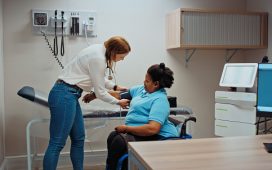For many populations around the world, accessing healthcare services can be a significant challenge. Whether due to physical, geographical, or cultural barriers, many people face obstacles when trying to access healthcare services. Fortunately, innovative solutions are emerging to address these healthcare access disparities and improve the health outcomes of underserved populations. In this blog post, we will explore some of the latest innovations that are redefining healthcare accessibility.
Telehealth: Reaching Patients Wherever They Are
Telehealth has been a game-changer in healthcare accessibility by enabling healthcare professionals to provide remote consultations, diagnosis, and treatment. Telehealth has transformed healthcare by enabling medical professionals to reach patients in remote or underserved areas or those limited by mobility challenges. It can provide a cost-effective, practical solution for communicating with healthcare providers, making healthcare more accessible and reducing the number of unnecessary hospital visits.
Telehealth use has exploded during the COVID-19 pandemic, enabling healthcare professionals to serve patients safely from a distance. Telehealth has been essential in providing medical advice and triage early to those infected and in equipping the public with essential healthcare information.
Mobile Clinics: Bringing Healthcare Services to Communities on the Move
Mobile clinics are another innovative solution that seeks to bridge the gap in healthcare accessibility. These are mobile facilities that can provide a range of healthcare services, from basic health checks to more specialized medical procedures. Mobile clinics can be deployed to serve people within remote communities, natural disaster areas, or populations displaced by war, among others. By bringing healthcare services closer to the people in need, these clinics are removing the geographical and infrastructural barriers that exist in traditional healthcare facilities.
Wearable Health Devices: Putting Health Monitoring in Patients’ Hands
Wearable health devices like fitness trackers, smart watches, and health apps have been revolutionary in monitoring health conditions in real-time, helping doctors track data and enable patients to become more proactive in their healthcare. They have the potential to enhance disease prevention, diagnosis, and healthcare education, especially for underserved populations. Additionally, wearable technology can help healthcare providers monitor patients remotely, enabling better management of chronic conditions.
Community Health Workers: Bridging the Gap in Healthcare Services
Community health workers are healthcare professionals who are embedded within a community and help to provide essential healthcare services and bridge communication between the community and healthcare systems, regardless of how far the nearest hospital or clinic may be. They can provide low-cost, high-quality care that would otherwise not be available. Community health workers can provide services such as health education, immunizations, advanced clinical care as well as help to coordinate healthcare treatment.
Conclusion
Healthcare accessibility is a significant challenge for many populations worldwide. However, innovative solutions, including telehealth, mobile clinics, wearable health devices, and community health workers, are challenging traditional healthcare models to improve healthcare access. These solutions can enable healthcare providers to deliver cost-effective services to remote and underserved populations, reduce the socioeconomic and cultural barriers that impact healthcare access and improve health outcomes. As technology continues to advance, the potential for innovative solutions that bridge and address the effects of healthcare access disparities become even more critical.








